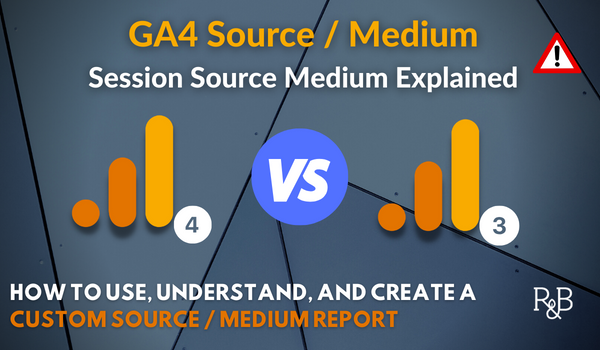Comprehending Secondary Dimensions in Google Analytics: Definition and Tactical Integration
Comprehending Secondary Dimensions in Google Analytics: Definition and Tactical Integration
Blog Article
Introducing the Impact of Secondary Measurement in Google Analytics on Information Evaluation and Insights
In the realm of information analytics, the usage of secondary measurements within Google Analytics has arised as a pivotal device for extracting much deeper insights and unraveling facility patterns that might or else remain covered. By peeling off back the layers of main information sets, second dimensions supply a nuanced point of view that enriches the understanding of individual behavior, web site efficiency, and the performance of marketing strategies. The true effect and untapped possibility of second dimensions are commonly underestimated, eclipsed by the attraction of key metrics. As we navigate through the complex landscape of information analysis, the importance of additional measurements becomes increasingly evident, losing light on essential details that hold the trick to informed decision-making and tactical optimizations.
Exploring the Concept of Second Dimensions
Second measurements in Google Analytics provide added insights by enabling individuals to assess primary information in combination with a second feature. This attribute makes it possible for a much more complete understanding of the main data by adding an additional layer of info for analysis. By incorporating second dimensions, users can dive much deeper into the information and reveal useful connections that might or else go undetected. By matching the key data of website web traffic with secondary measurements like demographics or habits, marketers can obtain a much more extensive sight of their audience and customize their techniques as necessary.
By checking out the numerous second measurements readily available in Google Analytics, customers can unlock new insights and optimize their electronic advertising initiatives. In significance, second measurements offer as a powerful tool for enhancing information analysis and driving workable outcomes.
Enhancing Data Interpretation With Second Measurements
Having developed the fundamental understanding of additional dimensions in Google Analytics and their crucial duty in data analysis, the emphasis now shifts in the direction of leveraging these additional attributes to boost the analysis of analytics data (what is a secondary dimension in google analytics). By including secondary measurements into data evaluation, experts can gain much deeper insights right into user behavior, site performance, and marketing performance

Furthermore, second dimensions help in contextualizing key information metrics by offering added layers of info. This contextualization aids in recognizing the 'why' behind the information trends, aiding analysts make informed choices and optimizations to boost general performance. Inevitably, integrating second measurements enriches the information interpretation procedure, resulting in more purposeful insights and critical actions.
Discovering Hidden Insights Through Additional Dimensions
Checking out the midsts of analytics data with second dimensions discloses important understandings that would or else remain covered. By incorporating second dimensions in Google Analytics, businesses can uncover covert patterns, trends, and relationships that provide a more thorough understanding of user behavior and web site efficiency. These additional layers of data enable analysts to delve deeper right into the main measurements, such as traffic resources or touchdown pages, and acquire an extra nuanced perspective on how various variables connect with each various other.
Through using second measurements, experts can segment and compare data throughout numerous measurements, enabling them to identify particular aspects that affect customer engagement, conversion rates, and general success metrics. By pairing the primary dimension of 'device category' with the secondary dimension of 'age team,' marketers can pinpoint which age demographics prefer accessing the site with mobile gadgets versus desktops. This level of granularity empowers companies to make data-driven decisions and optimize their strategies for better results. Eventually, revealing concealed understandings via secondary dimensions improves the depth and precision of data evaluation, bring about even more educated decision-making and boosted efficiency end results.
Leveraging Second Dimensions for Actionable Analytics
Structure upon the insights introduced via additional measurements in Google Analytics, services can currently harness this enriched data landscape to drive workable analytics and tactical decision-making. By leveraging second measurements, organizations can delve much deeper into their data to remove useful patterns, patterns, and correlations that might have previously gone undetected. This deeper degree of analysis makes it possible for organizations to get an extra extensive understanding of customer behavior, campaign efficiency, and overall web site site web performance.
One secret benefit of utilizing additional measurements for workable analytics is the ability to section information based upon particular requirements. This division permits companies to customize their approaches and projects to various target market groups, resulting in a lot more targeted and reliable marketing efforts - what is a secondary dimension in google analytics. Furthermore, secondary dimensions offer a more alternative sight of customer communications, making it possible for businesses to optimize their site material, style, and general individual experience
Making Best Use Of Decision-Making With Second Measurements
To boost critical decision-making in analytics, leveraging second dimensions in Google Analytics can give an extra nuanced viewpoint on customer habits and campaign performance. By including second measurements right into data analysis, companies can delve deeper right into the specifics of their website site visitors' communications and involvement patterns. This additional layer of information permits an extra detailed understanding of exactly how various variables, such as demographics, devices, or web traffic resources, effect essential performance indications.

Verdict
In final thought, using second measurements in Google Analytics plays a vital function in improving information evaluation and uncovering hidden insights. By discovering this concept, one can get a deeper understanding of individual actions and make informed choices based upon actionable analytics. Leveraging second measurements enables for an extra comprehensive analysis of information and maximizes the efficiency of decision-making procedures.

Report this page